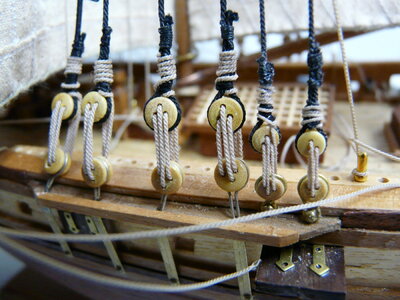- Joined
- Jul 23, 2021
- Messages
- 16
- Points
- 58

From my previous wooden ship, I learned that the standing rigging was thick, black, and the running rigging light (beige) coloured (HMS Endeavour, Artesania Latina).
The ship that I am currently building (Halifax, Constructo), provided the following rope:
Advice will be greatly appreciated.
Jan Malherbe
The ship that I am currently building (Halifax, Constructo), provided the following rope:
- Fine rigging thread, 0.25 mm, brass
- Fine rigging thread, 0.50 mm, hemp
- Thick rigging thread, 0.75 mm, hemp
- Fine rigging thread, black, 0.50 mm, tarred
- Thick rigging thread, black, 0.75 mm, tarred.
Advice will be greatly appreciated.
Jan Malherbe








